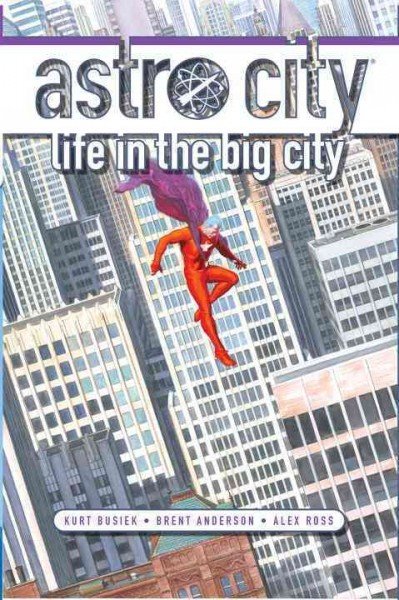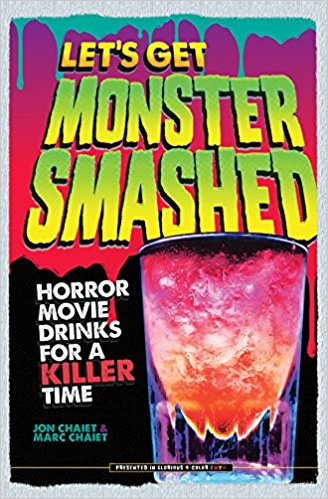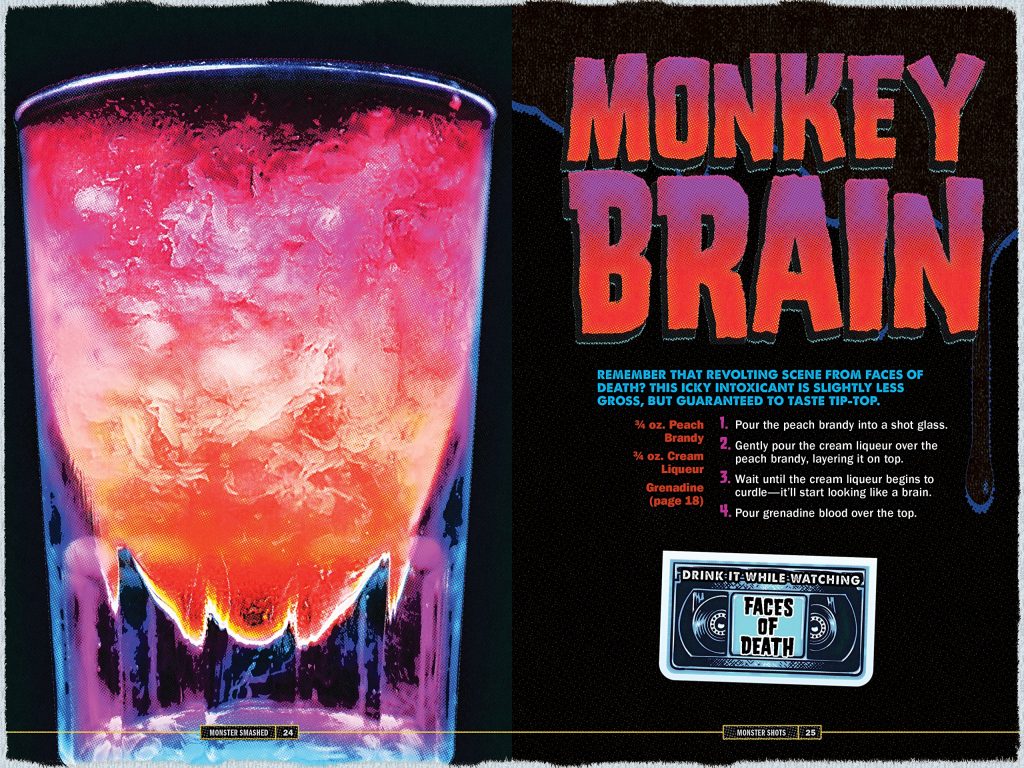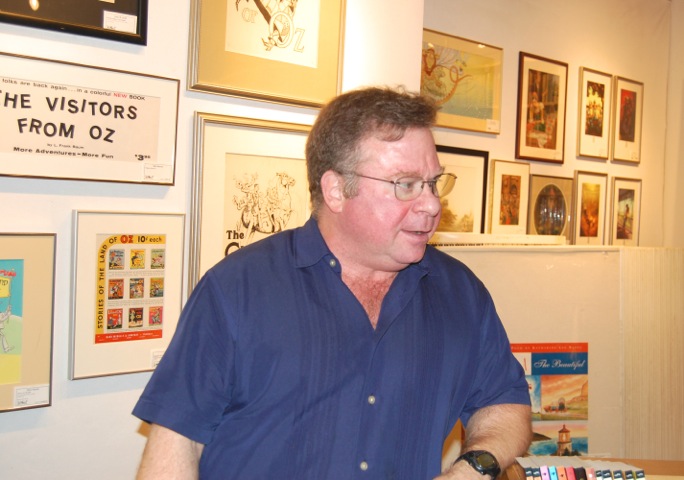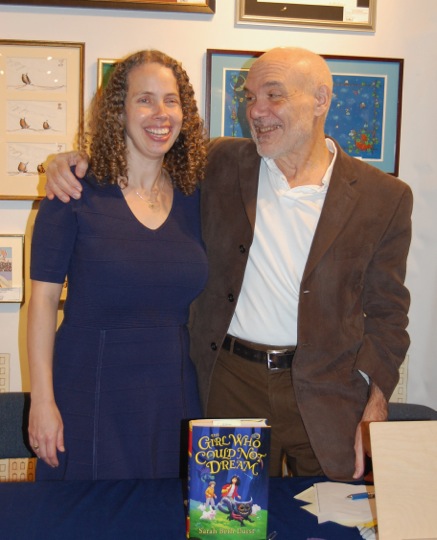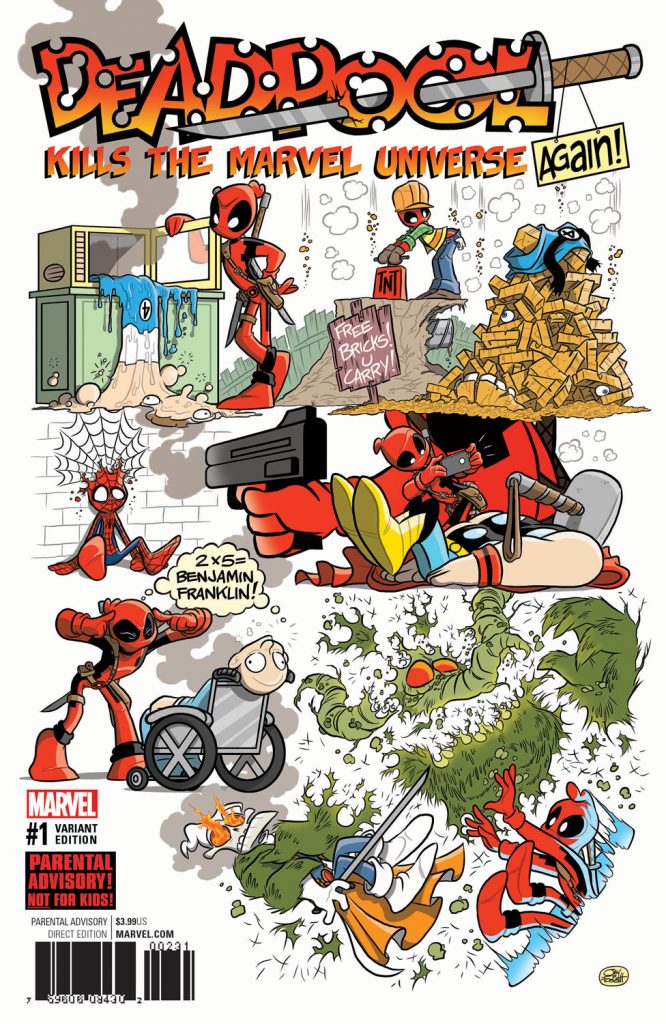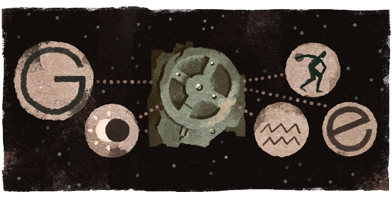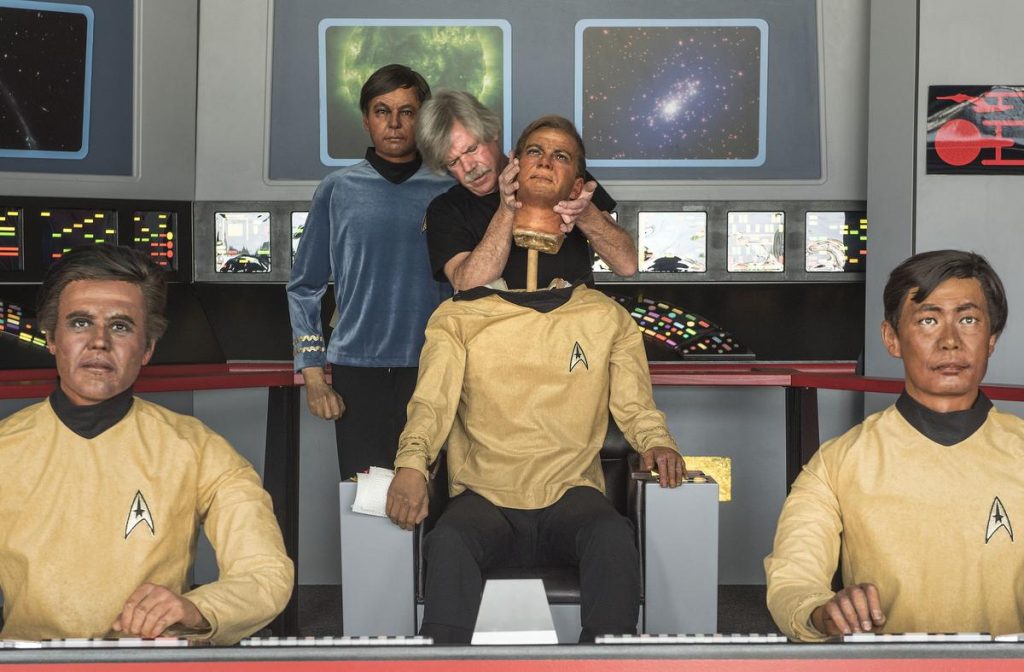(1) TOP COMICS. NPR asked followers the name their favorite comics and graphic novels. Here are the results: “Let’s Get Graphic: 100 Favorite Comics And Graphic Novels”.
We assembled an amazing team of critics and creators to help winnow down more than 7,000 nominations to this final list of 100 great comics for all ages and tastes, from early readers to adults-only.
This isn’t meant as a comprehensive list of the “best” or “most important” or “most influential” comics, of course. It’s a lot more personal and idiosyncratic than that, because we asked folks to name the comics they loved. That means you’ll find enormously popular mainstays like Maus and Fun Home jostling for space alongside newer work that’s awaiting a wider audience (Check Please, anyone?).
Lots of good stuff on this list. Here’s an absolutely chosen-at-random example:
Astro City
by Kurt Busiek and Brent Anderson
At once a sprawling adventure anthology and a witty metariff on the long, whimsical history of the superhero genre, Astro City offers a bracingly bright rejoinder to “grim-and-gritty” superhero storytelling. Writer Kurt Busiek and artist Brent Anderson — with Alex Ross supplying character designs and painted covers — don’t merely people their fictional metropolis with analogues of notable heroes, though there are plenty of those on hand. The universe they’ve created pays loving homage to familiar characters and storylines even as it digs deep to continually invent new stories and feature new perspectives. Astro City is a hopeful place that dares to believe in heroes, sincerely and unabashedly; reading it, you will too.
(2) LAST YEAR’S HARDEST SF SHORT FICTION. Rocket Stack Rank has a new post surveying “Hard SF in 2016”.
Greg Hullender explains, “We’d have done this earlier in the year, but we were experimenting with new features like place and time, and we ended up gradually going back through all 814 stories annotating them. Still, I think the result is of interest.
It has been eighteen months since we explored the Health of Hard Science Fiction in 2015 (Short Fiction), so we’re overdue to take a look at 2016. This report divides into three sections:
- A selection of 42 of the best hard SF stories of 2016 together with links to the ones that are free online.
- A list of 21 controversial SF stories of 2016, where RSR disagreed with other reviewers.
- A detailed analysis of hard SF in 2016 with charts and graphs.
(3) TZ REBOOT. Can this writer bring The Twilight Zone back to life? “Christine Lavaf to Pen ‘The Twilight Zone’ Reboot”.
Screenwriter Christine Lavaf is working on a reboot of The Twilight Zone.
Warner Bros has been trying to develop the new movie version of the hit horror since 2009 and a number of directors were lined up to helm the production, but each left the project before shooting could begin.
However, Warner Bros has now announced Christine will be working on the script despite a director having not yet been found to oversee the production, according to Variety.
The original plan for the movie was for it to be inspired by the 1983 Twilight Zone: The Movie horror, which was produced by Steven Spielberg and John Landis and had four segments each with a different director. But the new movie will reportedly follow just one story, which will include elements of The Twilight Zone universe.
(4) DRAWING A BLANK. Australian artist Nick Stathopoulos told his Facebook readers “No Archibald joy this year.”
Last year his painting of Deng Adut was a runner-up for the Archibald Prize for portraits — awarded annually to the best portrait, “preferentially of some man or woman distinguished in art, letters, science or politics, painted by any artist resident in Australasia” – and the winner of the Archibald Prize People’s Choice award.
Stathopoulos is a long-time fan, 10-time winner of the Australian NatCon’s Ditmar Award, and a past Hugo and Chesley Award nominee. He is frequently in contention for the annual Archibald awards.
(5) ARTISTS AT WORK. The Meow Wolf “art collective” in Santa Fe got their start with a $3.5 million investment from George R.R. Martin, and many of their “immersive installations” are sf related. Natalie Eggert’s article “This 140-Person Art Collective Is Pursuing An Alternative Model For Artists to Make A Living” for Artsy talks about how Meow Wolf has created 140 jobs with income coming from people who pay $20 to look at their “immersive installations.”
Since the Santa Fe-based art collective Meow Wolf opened its permanent installation, the House of Eternal Return, in March 2016, the project has been an unmitigated success in terms of viewership and profits. Housed in a 20,000-square-foot former bowling alley, the sprawling interactive artwork welcomed 400,000 visitors in its first year—nearly four times as many as expected—and brought in $6 million in revenue for the collective’s more than 100 members.
One of the most popular attractions in Santa Fe, the House of Eternal Return invites visitors into an elaborate Victorian house that is experiencing rifts in space-time. Open up the refrigerator or a closet door and get swept away into a new environment, each one designed by different artists of the Meow Wolf collective. There is no set route to follow and you can climb on, crawl through, and touch everything in sight. Tickets to enter the fun-house-like installation cost $20 for adults (on par with admission to a New York museum), with discounted rates available for New Mexico residents, children, senior citizens, and the military.
The installation’s sci-fi narrative, lawless abandon, and production quality have captured the imaginations of viewers, while its success has caught the art world’s attention. Could this be a sustainable, alternative avenue for artists to collaborate and make a living outside of traditional art world models?
(6) SENDAK BOOK MS. REDISCOVERED. Atlas Obscura reports: “Found: An Unpublished Manuscript by Maurice Sendak”.
Since the beloved children’s author Maurice Sendak died in 2012, the foundation set up in his name has been working to collect and sort through his artwork and the records of his life. While working through some old files, Lynn Caponera, the president of the foundation, found the typewritten manuscript for a book. When she looked more closely at it, she realized it was story she didn’t remember, reports Publishers Weekly.
What she had found was the story for Presto and Zesto in Limboland, a work that Sendak and collaborator Arthur Yorinks had worked on in the 1990s and never published. “In all honesty, we just forgot it,” Yorinks told Publishers Weekly.
(7) TODAY IN HISTORY
- July 12, 2013 — Pacific Rim debuted.
(8) TODAY’S BIRTHDAY BOY
- Born July 12, 1912 — Artist Joseph Mungaini, who illustrated the 1962 Oscar-nominated film Icarus Montgolfier Wright based on Ray Bradbury’s story.
(9) LUCY LIU. Rebecca Rubin in Variety says that Lucy Liu will direct the first episode of season 2 of Luke Cage coming in 2018. She previously directed four episodes of Elementary.
(10) STAND BY FOR A NEW THEORY. NPR’s Glen Weldon says new Spider-Man wins because we see learning rather than origin: “Origin-al Sin: What Hollywood Must Learn From ‘Spider-Man: Homecoming'”.
Spider-Man: Homecoming dispenses with his origin story completely, which is, at this point, a wise move. Given Spidey’s status as Marvel’s flagship character and his concurrent cultural saturation, it’s perhaps even inevitable, because: We know.
We get it. Spider-bite, spider powers, great responsibility. We’ve, all of us, been there.
And yet! Even without seeing precisely how and why Peter Parker gets from the here of normal life to the there of fantastic, thwippy powers, Tom Holland is eminently, achingly relatable. His Peter is someone in whom we easily see ourselves at our most excited and anxious. Which is the whole secret.
(11) THIS SUCKS. Using ROVs to scoop up invasive species: “Can a robot help solve the Atlantic’s lionfish problem?”. There’s a video report at the link.
Robots in Service of the Environment has designed an underwater robot to combat a growing problem in the Atlantic Ocean: the invasive lionfish.
(12) MAJOR DEVELOPMENT. A league of their own? Overwatch starts city-based videogaming league: “Overwatch: Bigger than the Premier League?”
Its developer Activision Blizzard has just announced the first seven team owners for a forthcoming league. It believes, in time, the tournament could prove more lucrative than the UK’s Premier League – football’s highest-earning competition.
Several of the successful bidders have made their mark with traditional sports teams, and the buy-in price has not been cheap.
The BBC understands the rights cost $20m (£15.5m) per squad. For that, owners get the promise of a 50% revenue split with the Overwatch League itself for future earnings.
The fast-paced cartoon-like shooter was designed to appeal to both players and spectators. It’s low on gore and features a racial mix of male and female heroes, including a gay character – a relative rarity in gaming.
(13) THEY’RE PINK. Adweek covers a parody of female-targeted products: “‘Cards Against Humanity for Her’ Is the Same Game, but the Box Is Pink and It Costs $5 More”.
In a savage parody of women-targeted products like Bic for Her pens, and Cosmo and Seat’s car for women, Cards Against Humanity has released Cards Against Humanity for Her. It’s the exact same game as the original, but comes in a pink box and costs $5 more.
The press release is a gold mine of hilarity.
“We crunched the numbers, and to our surprise, we found that women buy more than 50 percent of games,” said Cards Against Humanity community director Jenn Bane. “We decided that hey, it’s 2017, it’s time for women to have a spot at the table, and nevertheless, she persisted. That’s why we made Cards Against Humanity for Her. It’s trendy, stylish, and easy to understand. And it’s pink.”
Bane added: “Women love the color pink.”
The game is available for $30 on CardsAgainstHumanityForHer.com, which has all sorts of ridiculous photos and GIFs. The limited-edition version “is expected to sell out,” the brand said.
From the FAQ (where it’s in pink text).
When I inevitably purchase this without reading carefully and then find out it’s the same cards as the original Cards Against Humanity, can I return it and get my money back? That color looks great on you! No.
(14) SHARKE REPELLENT. Mark-kitteh sent these links (and the headline) to the latest posts by the Shadow Clarke jury. He adds, “Only two of these, but the Becky Chambers roundtable is likely to provide enough rises in blood-pressure on its own.”
- “‘We need to talk about COCOA’: A Shadow Clarke Discussion of Becky Chambers’s A Closed and Common Orbit” – Nick Hubble introduces the jury’s remarks.
The inclusion of A Closed and Common Orbit on this year’s Clarke shortlist follows hard on the heels of Chambers’s 2016 shortlisting for her debut novel, The Long Way to a Small Angry Planet. In a very short time, Chambers’s books have proven extraordinarily popular and drawn an enthusiastic fan response. Unsurprisingly, ACACO has also been shortlisted for the 2017 Hugo. The novel has also drawn praise from reviewers, such as Adam Roberts in the Guardian. However, despite the shadow Clarke jury being split fifty-fifty between those who found ACACO to be a compulsive read and those who struggled to find any interest in it whatsoever, this is also the novel that has come closest to unifying what is often a more diverse body of opinion than it might appear from the outside. We are unanimous in thinking that ACACO is not one of the six best SF novels of the year and, in contrast to the other five works on the list, there is nobody among us who would make any kind of case for its inclusion on the Clarke shortlist.
I am possibly not the right audience for this novel. I have read a number of stories by Yoon Ha Lee before this without being particularly impressed by any of them. The novel, Ninefox Gambit crystallized some of those discontents. In no particular order:
1: Yoon Ha Lee has read too much Iain M. Banks. The influence is everywhere and inescapable: the grotesque deaths, the over-elaborate weapons (including one I couldn’t help identifying as the Lazy Gun from Against a Dark Background), and, of course, the central conceit in which the mind of an ancient general is implanted in a younger person on a suicide mission is a straight lift from Look to Windward. But Banks’s humanity is missing. With Banks you always knew where the author stood, ethically and emotionally; not so with Lee, this is a cold book.
(15) FROM PERKY TO UNBEATABLE. Lesley Goldberg of The Hollywood Reporter, in “Marvel’s New Warriors Sets Its Cast–Including Squirrel Girl”, says that the cast of this ten-episode series on Freeform has been set, and Milana Vayntrub, best known as the Perky Salesperson in 5,271,009 AT&T commercials, has been cast as Squirrel Girl.
Milana Vayntrub (This Is Us) has landed the breakout role of Squirrel Girl, while Baby Daddy grad Derek Theler will stay in business with Freeform after landing the role of Mister Immortal in Marvel’s first live-action scripted comedy.
The duo lead the ensemble cast in the 10-episode series about six young people learning to cope with their abilities in a world where bad guys can be as terrifying as bad dates. Joining Vayntrub and Theler are Jeremy Tardy as Night Thrasher, Calum Worthy as Speedball, Matthew Moy as Microbe and Kate Comer as Debrii.
(16) ETCHED IN STONE. It’s been awhile since I checked in on Declan Finn, and I found one of his posts on Superversive SF that could lead to lively discussion.
In “Pius Rules for Writers”, Declan Finn’s advice comes from his viewpoint as a reader.
I was recently asked what rules, as I reader, I wish writers would follow. I came up with a few.
Rule #1: Don’t preach at me. Tell the damn story…
I think this is self explanatory. Heck, even Star Trek IV, which is straight up “save the whales,” did a fairly good job of this. It was mostly a character driven comedy: let’s take all of our characters as fish and through them so far out of the water they’re in a different planet, and watch the fun start. Even the whales that must be saved for the sake of all of Earth are little more than MacGuffin devices, there for the story to happen.
But 2012? Or The Day After Tomorrow? Or Avatar? Kill me now.
Serious, I went out of my way to make A Pius Man: A Holy Thriller about the history of a Church, complete with philosophy, and it somehow still managed to be less preachy than any of these “climate change” films.
(17) NEWMAN’S NEXT. Joel Cunningham of the B&N Sci-FI & Fantasy Blog has great news for Planetfall fans (and a cover reveal) in “Return to Emma Newman’s Planetfall Universe in Before Mars”.
I still remember the feeling of closing the cover on a early, bound manuscript copy of Emma Newman’s Planetfall in 2015, sure I had read one of the finest science fiction novels of the year—even though it was only April (I wasn’t wrong).
Considering it’s a complete work, I was surprised—and very pleased—at the arrival of After Atlas, a standalone companion novel set in the same world—another book that, incidentally, turned out to rank with the best of its year (but don’t just take our word for it).
I just can quit being fascinated by this setting—a near future in which 3D printing technology has made resources plentiful, but post-scarcity living has not been evenly distributed, where missions to the stars only expose the dark secrets within the human heart—and it seems Newman can’t quite break away from it either: she’s writing at least two more books in the Planetfall series, and today,we’re showing off the cover of the third, Before Mars, arriving in April 2018 from Ace Books….
(18) NOT YOUR TYPICAL POLICE SHOOTING. Consenting cosplayers suffered a tragic interruption: “Police Shoot People Dressed As The Joker And Harley Quinn”.
Australian police shot a man and a woman dressed as comic book characters while they performed a sexual act at a nightclub early Saturday morning, news.com.au reported. The man and the woman were dressed as the Joker and Harley Quinn.
Dale Ewins, 35, was shot in the stomach by police. Authorities said they shot him because he pointed his toy gun at them and they believed it was a real weapon. However, club security said Ewins did not aim the gun at them.
Zita Sukys, 37, was shot in the leg. Both were attending the Saints & Sinners Ball, described as a party “for Australian swingers and those who are just curious.” Promotions for the party also said it has “a well-earned reputation as Australia’s, if not the world’s, raunchiest party.”
(19) FAN FASHION. The Dublin in 2019 bidders think you would look great in their logo shirt. Half-off sale!
(20 TOON FASHION. Why Cartoon Characters Wear Gloves is a video from Vox which goes back to 1900 to answer this question.
[Thanks to John King Tarpinian, Martin Morse Wooster, JJ, Cat Eldridge, Greg Hullender, Chip Hitchcock, and Mark-kitteh for some of these stories. Title credit goes to File 770 contributing editor of the day Daniel Dern.]

